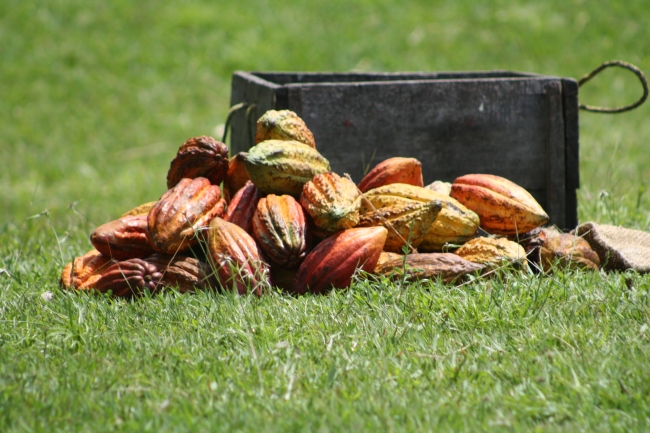Chapter 2 Knowledge in sustainable value chains.

Finca La Amistad Costa Rica
Already in antiquity, the philosopher Socrates questioned what knowledge is and how one should pursue it. Socrates devoted much of his efforts to defining words and concepts: his method was to pose questions. Like a three year-old child would repeat ‘why’ (e.g., Why is the sky blue?), Socrates repeated question after question until no further question could be asked. He claimed that there are two very different sorts of knowledge. One is the ordinary ‘trivial’ knowledge, which concern very specific (and ordinary) information, for example, the things we all know because we do them unconsciously. He claimed that having such knowledge does not give the holder any significant expertise or wisdom. The higher level knowledge could be described as definitional knowledge. In other words, if you can define a phenomenon it means that you understands ti, and this knowledge is superior to everyday ‘trivial’ knowledge.
Socrates’ contribution noted, Plato is usually credited as the founder of modern science and scientific thought. Plato asserted that a statement must meet three criteria to be considered knowledge: it must be justified (supported by evidence), true (in agreement with facts and reality), and believed. If one makes a claim, and another person questions it, then one would look for justification to convince the other person that his claim is true. Belief is knowledge if the belief is true and if the believer has a justification for believing it is true. Plato’s definition of knowledge necessitates that statements are justified by facts, which can be falsefied or validated. Today we refer to this systematic approach to knowledge simply as “science’. This approach also put scientific knowledge in another league from our common day-to-day knowledge and restricted the acces to this scientific league to only a fews select players: the scientists! As Sir Francis Bacon put it a century earlier, ‘knnowledge is power and those who know, rule the world’.
This brings us to the question how to pursue knowledge today. How is scientific knowledge related to what we knows from experience? How can we learn from practical knowledge? And if different kind of knowledge do co-exist, how can it be organised so it can be transferred from one type into the other? To put it in context of the topic of this publication, a cocoa grower could argue the following, ‘If I grow cocoa and obtain a good harvest, but cannot explain how I did it, then still you cannot say that I do not know how to grow cocoa.’

Finca La Amistad
Agricultural knowledge systems
Previously it was believed that knowledge could only be generated by undertaking a scientific research processes, in particular in regard to agriculture. Farmers were practising agriculture in the same way as during previous generations, and researchers believed that improvements could only be achieved through a transfer of knowledge from science to thes farmers. In order to modernise agriculture, science had to test and validate innovations, which were transferred through a system of extension provision to the communities of farmers. The farmers only needed to apply this developed knowledge in order to obtain higher yields and better economic returns. If the farmers continued to live in poverty, they were either not suitable for the job or not yet linked into the extension system, the preferred responce being to simply expand the extension system.
This dominant model created and developed a worldwide system of agriculture research and extension services taht is today well established. In Europe and the USA, this model produced high input agriculture, which was based on the latest scientific knowledge. Besides industrial inputs, this type of agriculture was also very capital intensive, resulting in self-reinforcing economies of scale on farms and the pursuit of continuous innovation. The farmer’ crop yields began to approache the levels projected in scientific models and obtained in research stations under ideal conditions. However, also the negative side effects of this system became increasingly apparent. The cost of the environmental damage -tolerated during the post-war decades of the twentieth century- wre increasingly being transferred from society to the farmers. A new paradigm -‘the poluter pays’- was increasingly cut into the profitability of high-input agriculture.
The reputation of Western agriculture declined, and responce the demands to reduce the huge public subsidies that supported the agricultural sector were being appeased. In the Netherlands -a country known for its sophisticated agricultural research and extension system- public services to farmers were rapidly being downsized. The system was ‘privatised’, implying that now farmers and agribusiness had to take care of their own extension services and that researchnhad to be sponsored by the agricultural sector.

Finca La Amistad Costa Rica
Meanwhile, the linear model between science and extension was being challenged by social scientist. They questioned the superiority of scientific knowledge, citing evidence that innovations can also emerge without science through human ingenuity and interaction. Does a community of Ghanian cocoa farmers not have the knowledge base for farming? Is indigenous and practice-based knowledge inferior to scientific knowledge? And, why is it that in spite of sophisticated scientific knowledge systems diversity in farms and farming practices persists? Are farmers just stubborn people or is there something else at play, which has equal value to scientific knowledge? A distinction can be made between different schools of thought. During the 1970s, Farming System research that referred to a farm as being more than the sum of its parts was developed. This approach considers the internal relationships between system components to define the level of its outputs: an insight that provided the space to acknowledge the farmers’ knowledge in effective handling of these interactions. Others focused more on the persistent diversity that exists in farling, whereby the dominant determining factor was the farmers’ knowledge and farm management skills. In this school of thought, different farm models can co-exist based on equally valuable rationale of human behaviour. In the Farming System school of though, science needs to study the rationale of these systems, but should continue developing knowledge based on an understanding what kind of knowledge required. The diversity school of though profoundly questions the role of scientific knowledge and emphasis the importance of social constructions and power relations. In this view, development does not come about through the application of scientific knowledge, but rather through social processes of empowerment and emancipation. Recently, approaches have emerged that do not try to define knowledge or engage in related rhetorical debates; rather they concentrate on design of effective modalities that can enhance the communication and knowledge exchanges between science, practitioners, and other stakeholders. Multi-stakeholders approaches and ‘innovation platforms’ are among these ways of creating and sharing knowledge and are yet to prove their value in terms of tangible results.

Finca La Amistad Costa Rica
Knowledge for sustainable value chains
As the previous sections demonstrated, there is a considerable research effort (with multiple approaches) which aims to provide stakeholders with knowledge that can be applied to stimulate development. But how do value chain stakeholders -notably the privat sector- secure an adequate knowledge base and access to new knowledge?…Pursuing sustainability in value chains presents several dilemmas regarding knowledge generation and knowledge sharing. First of all, a diverse set of actors -public, civil, and privat- must come to a joint agreement about their joint intentions and ambitions. These parties are not accustomend to working with each other and act from the position of their own languauge, corprate culture, and other particulartities. One actor may have had a negative ewperience with another actor, or there may be a considerable conflict of interests. This implies that the terms for realising knowledge exchanges need to be negotiated and moderated prior to any effort to jointly build knowledge. This touches on anther dilemma that could impede the smoothness of the knowledge exchange process. The privat sector pursues competitive advantages in order to better position itself in the market. As demonstrated above, knowledge is a strategic ingredient of the company’s profile; therefore, sharing knowledge broadly across the value chain could be considered unnatural behavior for a company. Before effective exchanges can be expected, the pursuit of chain wide sustainability must firts deal with this conflict.
A third dilemma concerns the kind of knowledge needed for pursuing sustainability value chains. What do actors pursue when they have sustainability in mind? Is a ‘Socrates dialogue’ required for defining what is understood by sustainability? For example, one value chain actor could stress the need for technological development (e.g., disease-tolerant cocoa hybrids) while another actor could insist on studying fair-pricing mechanisms and consumer behaviour. How is it defined, or – the even more difficult question- who defines the agenda for knowledge generation? When particular actors have a dominant position in a value chain, setting the agenda for knnowledge generation becomes a political process, which may undermine the collective goal to improve the sustainability across the value chain.

Finca La Amistad Costa Rica
Finally, there is a fourth dilemma: How can this useful knowledge be shared with larghe numbers of farmers, companies and their employees, and in the end consumers? Sharing knowledge on chain wide sustainability isseus requires a sound communication strategy. Reaching thousands of cocoa farmers (who may be illiterate) and informing even more Western consumers (who are overexposed to product information) is a monumental challenge that has no simple answer. Such a challenge requires a process of identifying good practice at each step of the value chain. What are effective approaches for involving larghe numbers of farmers in improving quantity and quality of production? For example, can we apply the Farmers’ Field School approach to improve the susainability of the production process, and at the same time involve all types of farmers (small and largeh, male and female)? What can be learned from other initiatives (e.g., UTZ CERTIFIED, the Rainforest Alliance, and Max Havelaar)?
Clearly the primiminary conclusion is that the pursuit of sustainability in cocoa value chains requires a well designed knowledge management straregy. Central to this strategy is value-chain-wide learning from own practice and relevant experiences in other chains or sustainability initiatives. Joint learning requires the involvement of all parties and their commitment to share knowledge. This may seem as unnatural at firts, but there is ample eveidence that is mutually profitable in the end: it enhances the generic profile of the value chain and its consumer products. After all, philosophic thought has emphasised for millennia that a ‘good reputation is worth more than money’ (Publilius Syrus,100 B.C.).
By clarifying their position as knoledge holders on sustainable cocoa chain development, the Dutch can play a more signifivant and recognisable role in the international discussions on this important matter. In addiction, such an analysis supports the design of a knowledge management strategy that adequately addresses the global character of the cocoa sector and the diversity of chain actors and chain supporters.
Source: Chocolate Forever Dutch knowledge on sustainable cocoa.
Chapter 2 Knowledge in sustainable value chains by Bart de Steenhuijsen Piters.(Director Development Policy and Practice, Royal Tropical Institute.
Pictures thanks to Juan Pablo Butchert, Nahua, Finca La Amistad.
50.819313
3.269374


![00651_hd[1]](https://whydowelovechocolate.files.wordpress.com/2013/07/00651_hd1.jpg?w=645&h=483)
![00652_hd[1]](https://whydowelovechocolate.files.wordpress.com/2013/07/00652_hd1.jpg?w=645&h=483)











